Table of Contents |
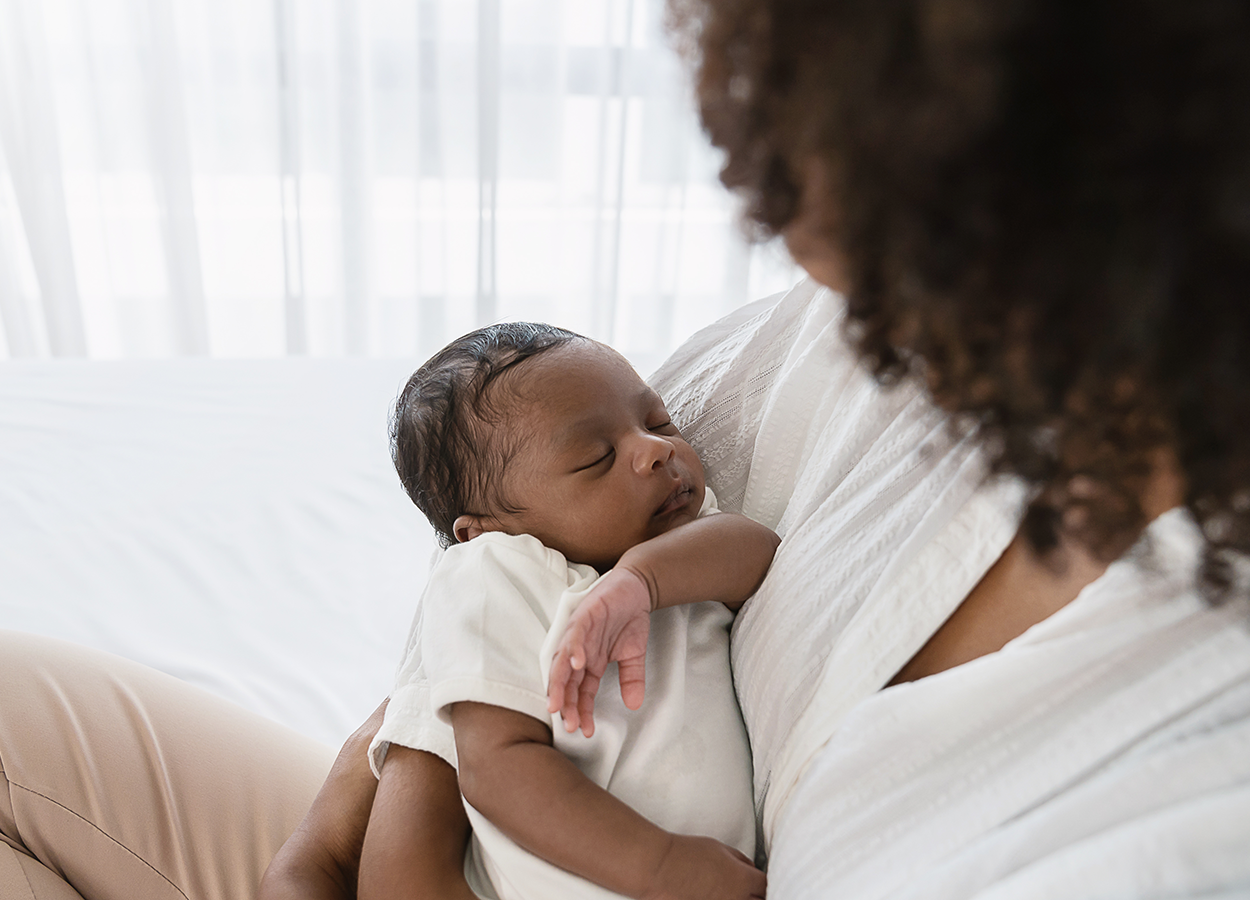
Small, uncoordinated, and slick with amniotic fluid, a newborn encounters the world outside of the womb. We do not often consider that a child’s birth is proof of the healthy functioning of the reproductive system. Moreover, endocrine systems had to secrete the appropriate regulating hormones to induce the production and release of unique male and female gametes, reproductive cells containing genetic material (one set of 23 chromosomes). Reproductive behavior or medical innovation had to facilitate the transfer of male gametes—the sperm—to the female gamete, an oocyte (egg). Finally, the combination of the gametes (fertilization) had to occur, followed by implantation and development. In this and the next challenge, you will explore the reproductive systems, whose functioning can culminate in the powerful sound of a newborn’s first cry.
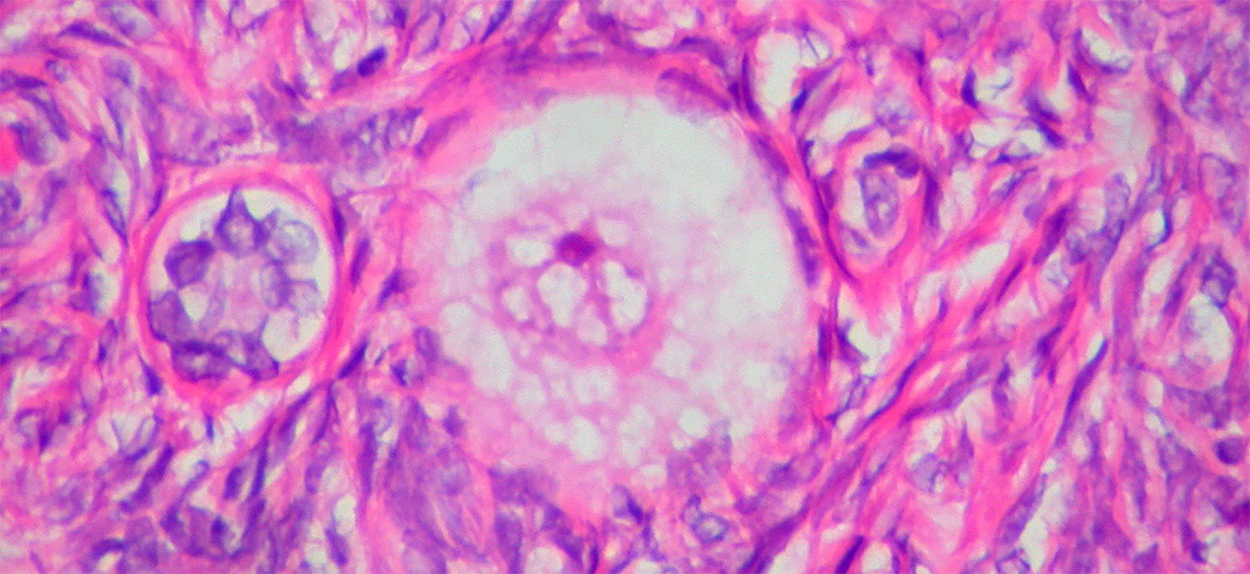
As in all animals, the adaptations for reproduction in humans are complex. They involve specialized and different anatomies in the two sexes, a hormone regulation system, and specialized behaviors regulated by the brain and endocrine system.
Humans reproduce by sexual reproduction, in which the genetic material of two individuals is combined to produce genetically diverse offspring that differ from their parents. The genetic diversity of sexually produced offspring is thought to give species a better chance of surviving in an unpredictable or changing environment. Species that reproduce sexually must maintain two different types of individuals, males and females. In this challenge, you will learn more about how the reproductive systems of humans facilitate sexual reproduction.
The testes in males and ovaries in females are reproductive organs called gonads that produce gametes and reproductive hormones. Unique for its role in reproduction, a gamete is a specialized sex cell, which in humans carries 23 chromosomes—one-half the number in body cells. In almost all sexually reproducing species, these two haploid cells (cells with one set of chromosomes) differ in size; the smaller gamete is called the male gamete and the larger one is called the female gamete. Gametogenesis is the formation of gametes: spermatogenesis is the process of formation of male gametes (sperm), whereas oogenesis is the process of formation of female gametes (ovum). At fertilization, the chromosomes in one sperm (or spermatozoon) combine with the chromosomes in one ovum to form a zygote that then develops into an embryo. That embryo grows into a baby.
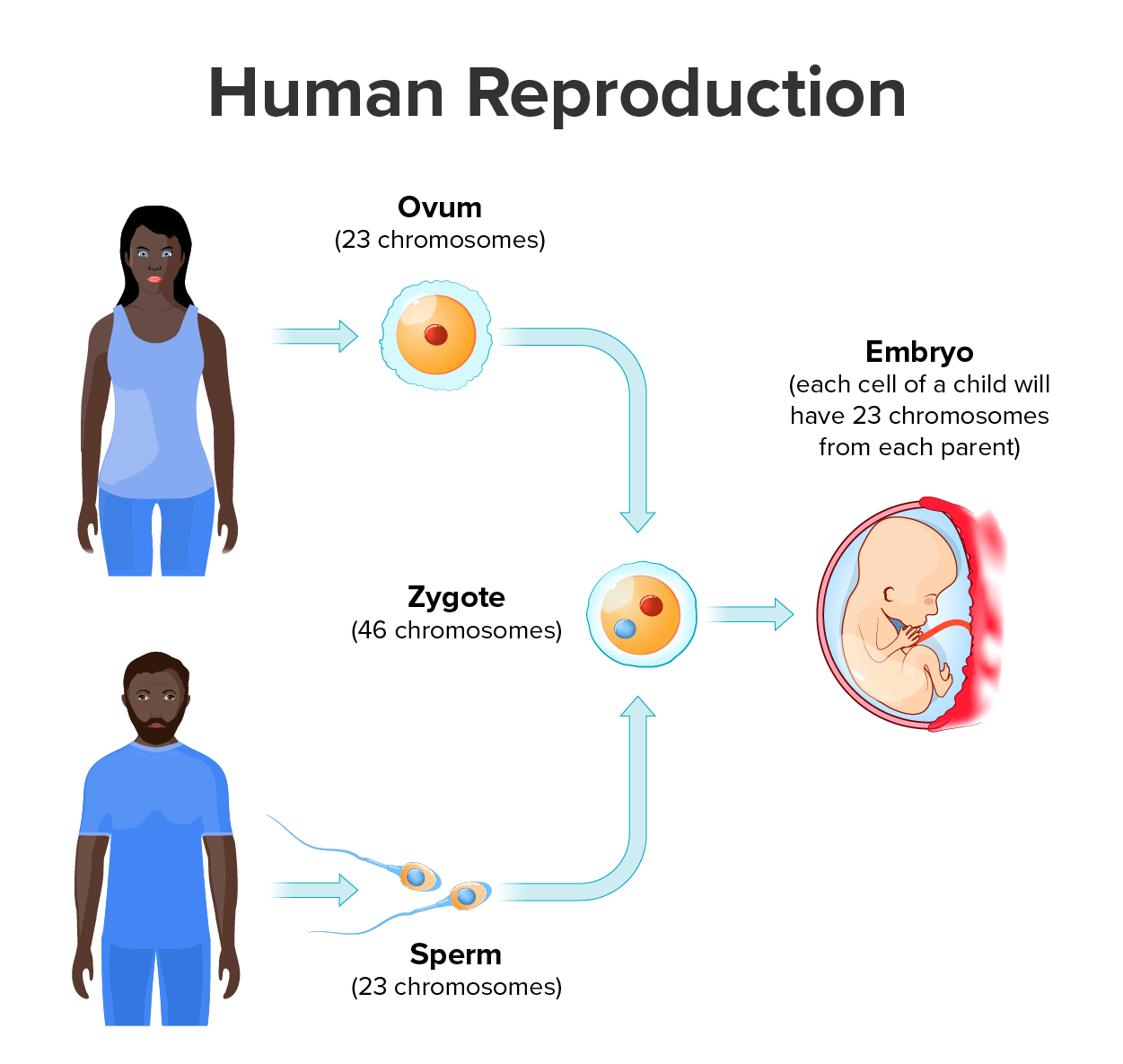
IN CONTEXT
Career Connections: Reproductive Endocrinologist
A reproductive endocrinologist is a physician who treats a variety of hormonal disorders related to reproduction and infertility in people of any gender. The disorders include menstrual problems, infertility, pregnancy loss, sexual dysfunction, and menopause. Doctors may use fertility drugs, surgery, or assisted reproductive techniques (ART) in their therapy. ART involves the use of procedures to manipulate the egg or sperm to facilitate reproduction, such as in vitro fertilization.
Reproductive endocrinologists undergo extensive medical training, first in a four-year residency in obstetrics and gynecology, then in a three-year fellowship in reproductive endocrinology. To be board-certified in this area, the physician must pass written and oral exams in both areas.
| Term | Pronunciation | Audio File |
|---|---|---|
| Gonads | go·nads |
|
| Gamete | gam·ete |
|
The reproductive tissues of male and female humans develop similarly in utero until, in some cases, a low level of the hormone testosterone is released from gonads. Testosterone causes the undeveloped tissues to differentiate into organs, such as the scrotum and penis. When testosterone is absent, the tissues continue to develop into structures such as the ovaries and labia. These cells are considered bipotential: one group of cells has the potential to develop into either type of reproductive structure. Primitive gonads become testes or ovaries. Tissues that produce a penis in males produce a clitoris in females. The tissue that will become the scrotum in a male becomes the labia in a female; that is, they are considered homologous structures (structures that are similar in origin but dissimilar in function).
Males and females also exhibit different characteristics as they develop. Primary sex characteristics are traits that are present at birth that are directly involved in reproduction. These characteristics include structures such as the penis and testes in males and the vagina and ovaries in females.
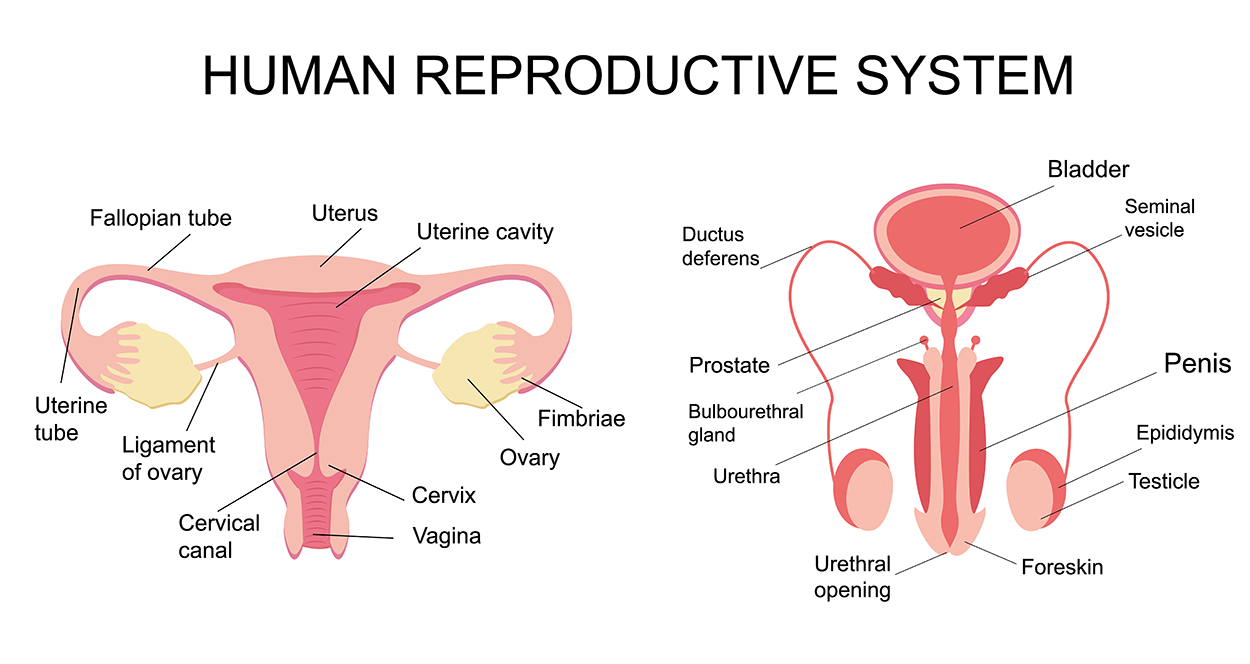
Secondary sex characteristics are physical characteristics that are related to an individual’s sex, but the trait is not directly part of the reproductive system, and they typically develop with puberty.
The primary hormone produced by the testes is testosterone, and an increase in its production following puberty in males results in the development of secondary sex characteristics such as a deepened voice, enlargement of the Adam’s apple, facial and body hair, broadened shoulders, maturation of genitalia, and increased muscle mass. The primary hormones produced by the ovaries are estrogens and progesterone, and an increase in their production following puberty in females results in the development of secondary sex characteristics such as increased adipose tissue, development of breast tissue, widening of the hips, and hair growth in the armpits, legs, and pubic region.
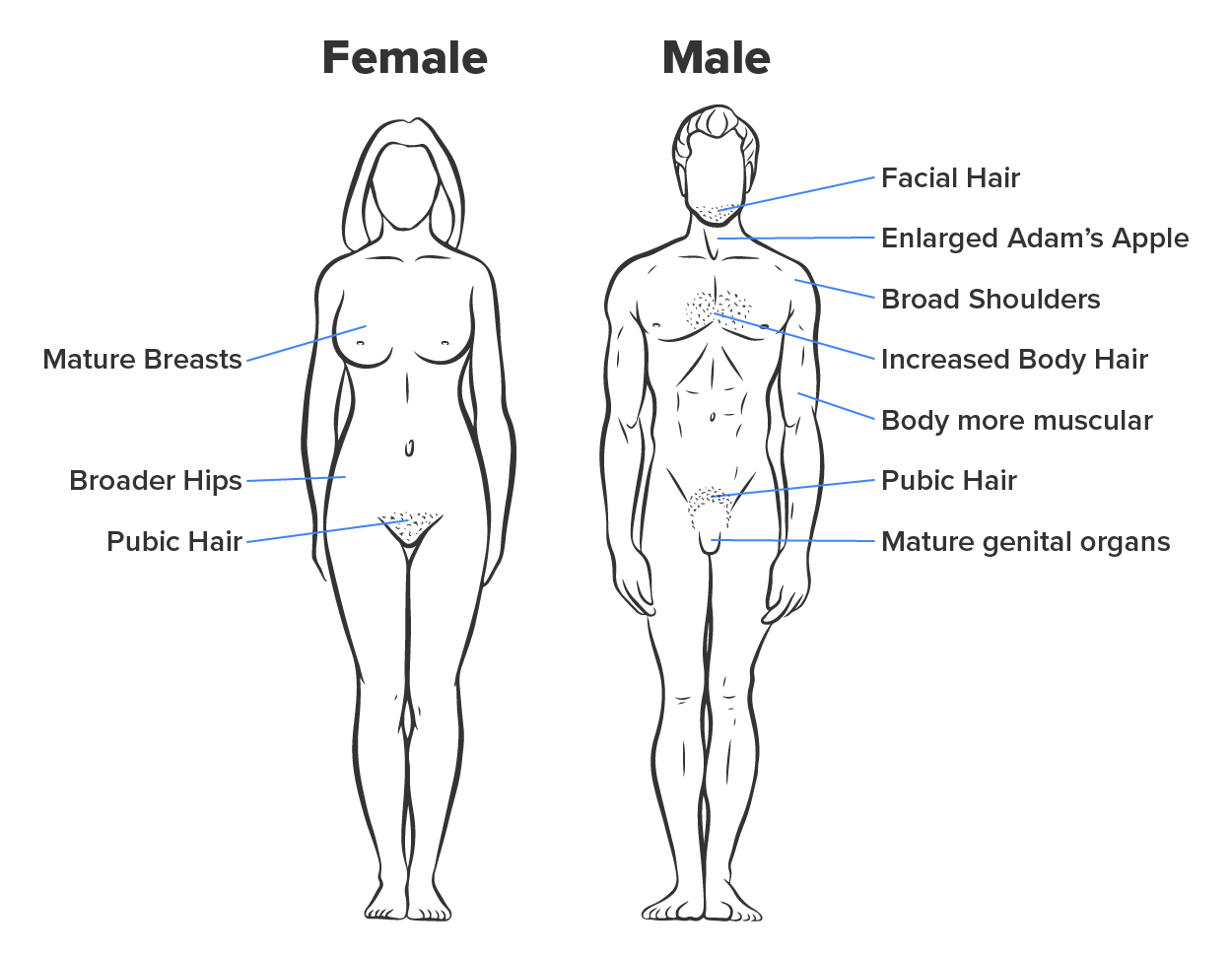
In future lessons in this challenge, you will learn more about the specific details and functions of both the male and female reproductive systems.
SOURCE: THIS TUTORIAL HAS BEEN ADAPTED FROM (1) "ANATOMY AND PHYSIOLOGY 2E" ACCESS FOR FREE AT OPENSTAX.ORG/DETAILS/BOOKS/ANATOMY-AND-PHYSIOLOGY-2E. (2) "BIOLOGY 2E" ACCESS FOR FREE AT OPENSTAX.ORG/DETAILS/BOOKS/BIOLOGY-2E. (3) "CONCEPTS OF BIOLOGY" ACCESS FOR FREE AT OPENSTAX.ORG/DETAILS/BOOKS/CONCEPTS-BIOLOGY. LICENSING (1, 2, & 3): CREATIVE COMMONS ATTRIBUTION 4.0 INTERNATIONAL